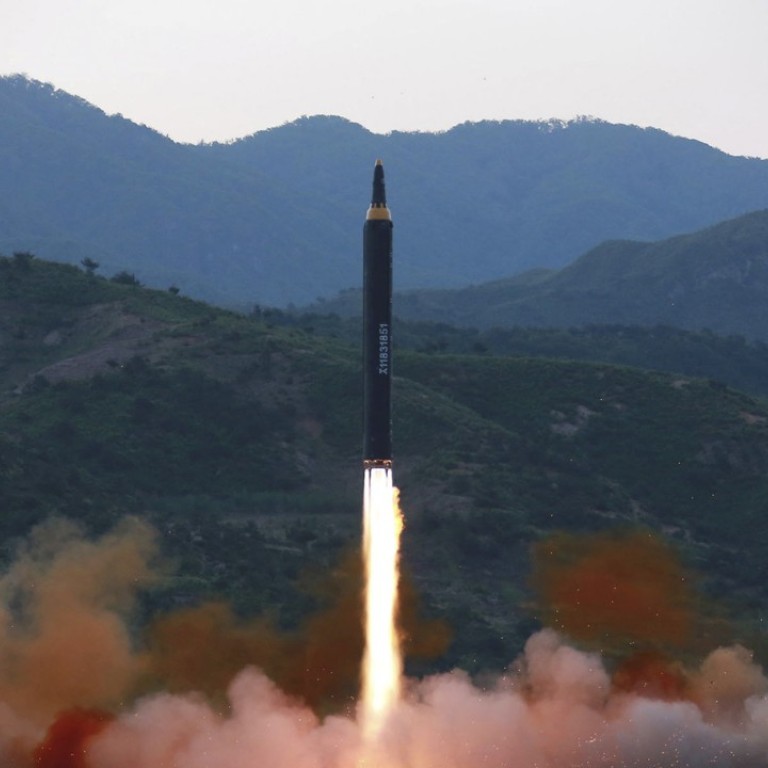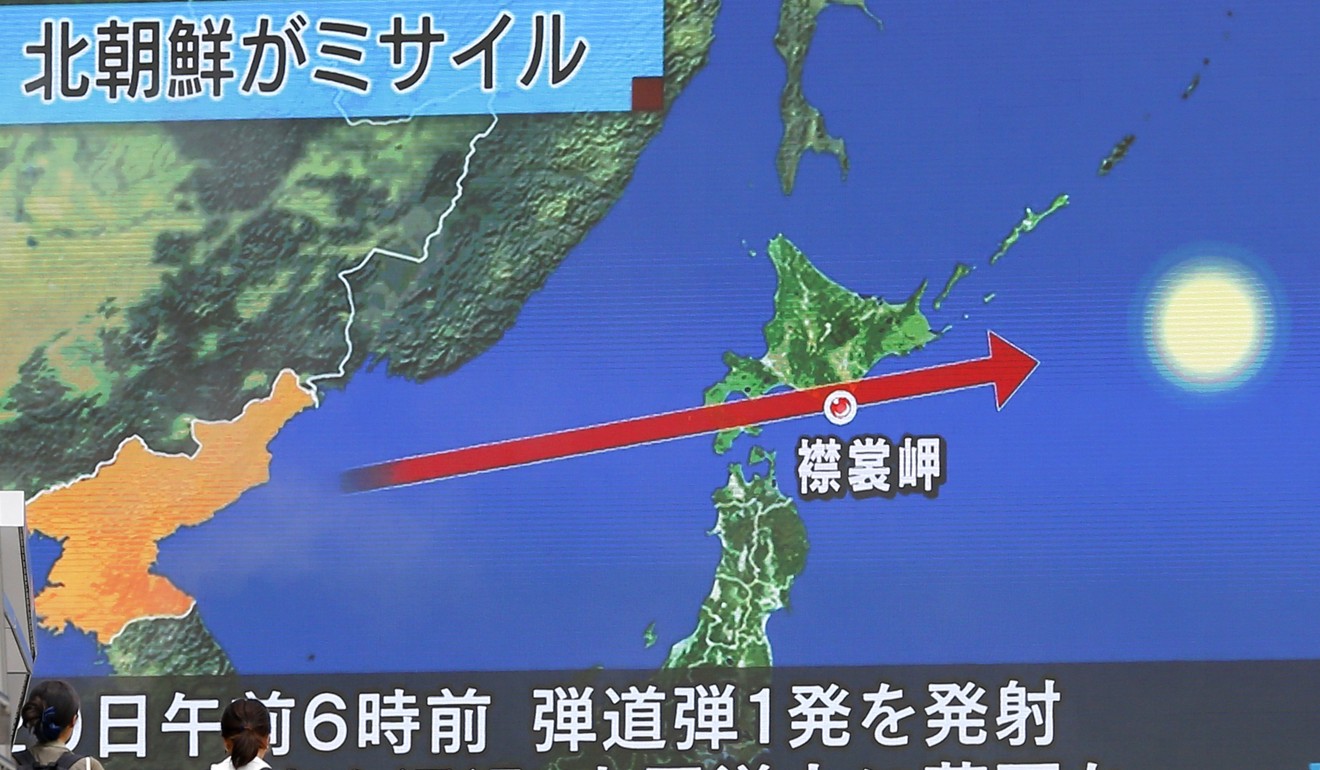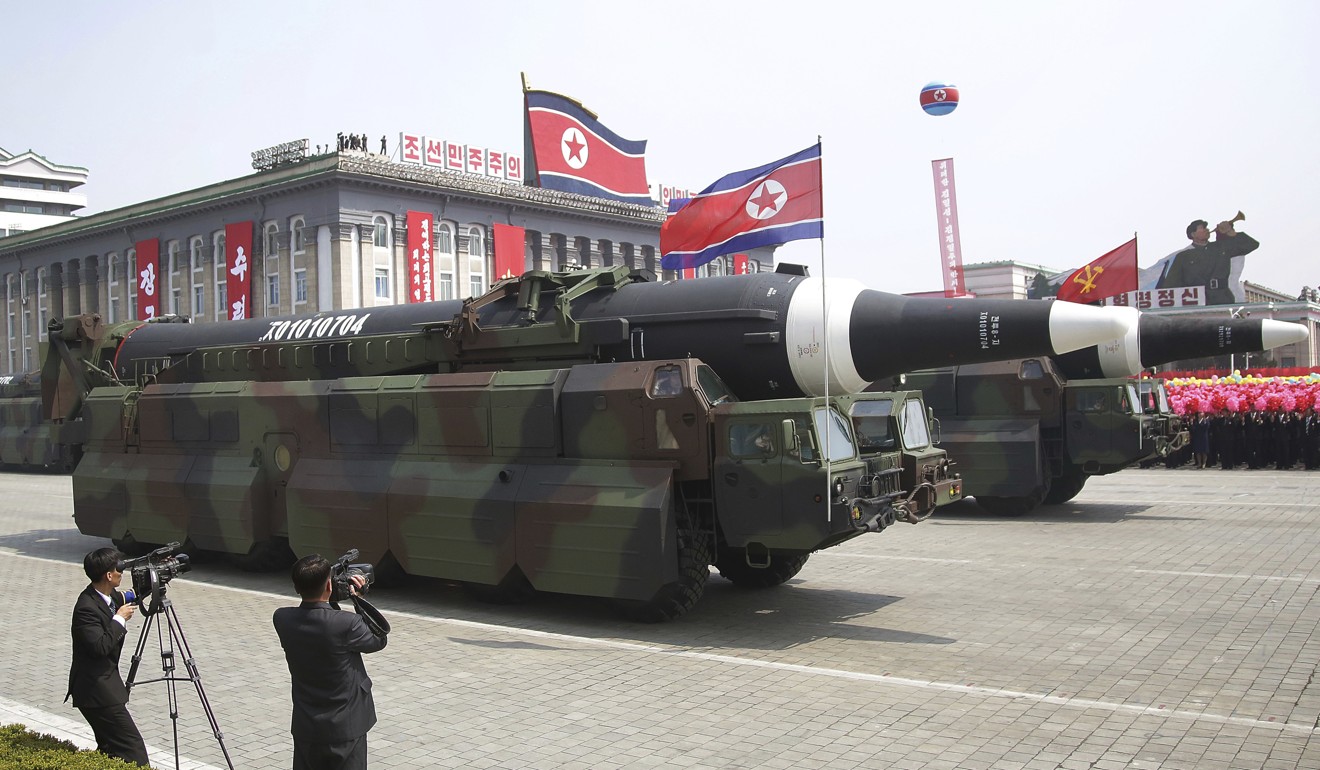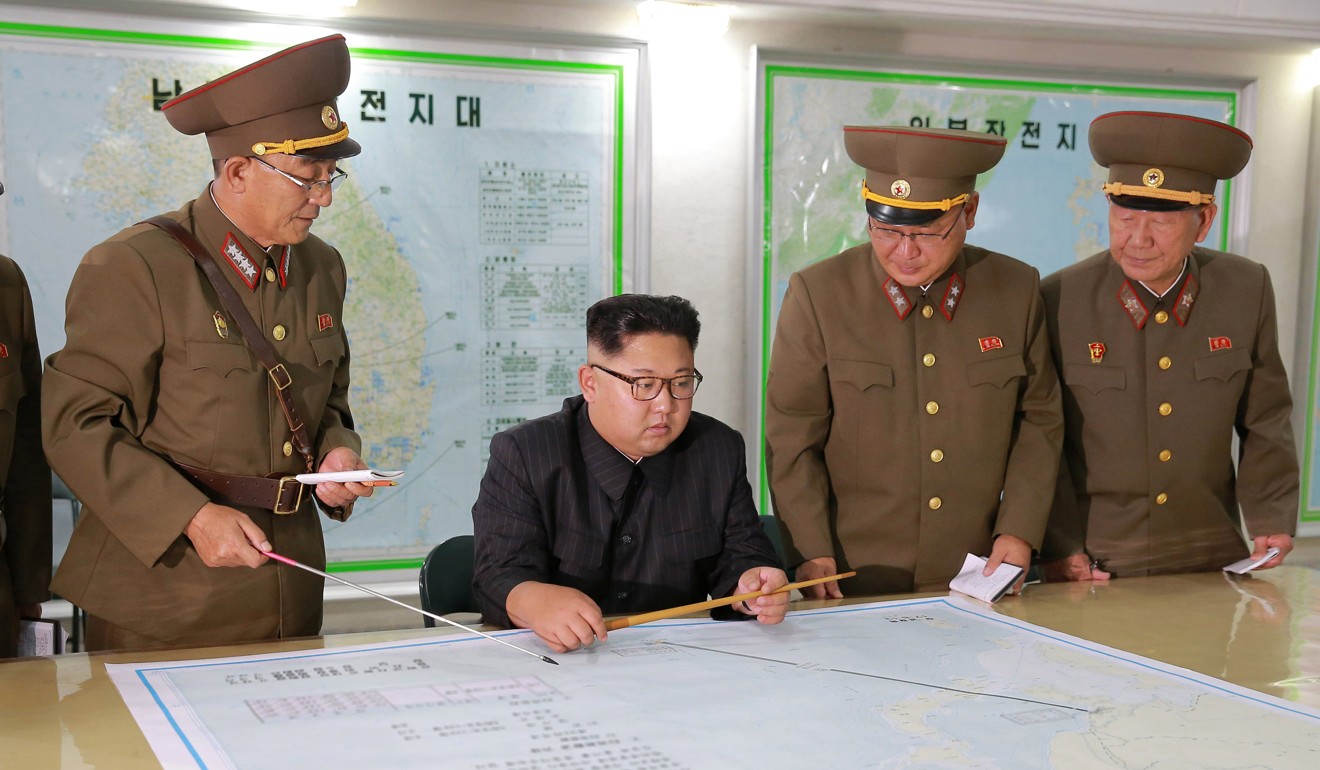
North Korea fires missile over Japan for first time since 2009, prompting Trump to insist ‘all options are on the table’
Nuclear-armed North Korea fired a ballistic missile over Japan on Tuesday in a major escalation that triggered a furious response from Tokyo and a warning from China that tensions had reached “tipping point”.
South Korea’s Joint Chiefs of Staff said the ballistic missile travelled around 2,700km and reached a maximum height of 550km as it flew over the northern Japanese island of Hokkaido about 5.06am Hong Kong time.

The missile broke into pieces and landed in waters off the east coast of Hokkaido, according to Japanese broadcaster NHK.
In response, US President Donald Trump said all options to respond to North Korea were on the table.
“The world has received North Korea’s latest message loud and clear: this regime has signalled its contempt for its neighbours, for all members of the United Nations, and for minimum standards of acceptable international behaviour,” Trump said in the statement released by the White House.
“Threatening and destabilising actions only increase the North Korean regime’s isolation in the region and among all nations of the world. All options are on the table.”
Trump and Japanese Prime Minister Shinzo Abe spoke by phone for 40 minutes after the launch, agreeing the test was unprecedented and to further increase the pressure on North Korea.
“We will do our utmost to protect people’s lives,” Abe told reporters. “This reckless act of launching a missile that flies over our country is an unprecedented, serious and important threat.”

Foreign ministry spokeswoman Hua Chunying urged all sides to avoid provocations and repeated Beijing’s call for the North to suspend missile tests in return for a halt to US-South Korean military exercises.
“[The situation is] now at a tipping point approaching a crisis. At the same time there is an opportunity to reopen peace talks”, Hua told a regular news briefing.
“We hope relevant parties can consider how we can de-escalate the situation on the peninsula and realise peace and stability on the peninsula.”
Later, North Korea accused the US of driving the Korean peninsula towards “an extreme level of explosion” and declared that it was justified in responding with “tough countermeasures”.
Han Tae-song, North Korea’s ambassador to the UN in Geneva, did not explicitly refer to his country’s latest test. But he said US “pressure and provocative acts” would only give his country grounds to take unspecified measures.
“It is an undeniable fact that the US is driving the situation of the Korean peninsula towards an extreme level of explosion by deploying huge strategic assets around the peninsula, by conducting a series of nuclear war drills and maintaining nuclear freeze and blackmail for over half a century,” Han told the Conference on Disarmament in Geneva.
South Korea also denounced the launch which was Pyongyang’s second missile firing in three days, while Russia said it was “extremely worried” about the situation in North Korea, hitting out at a “tendency towards an escalation”.
“We see a tendency towards an escalation ... and we are extremely concerned by the general developments,” Russia’s deputy foreign minister Sergei Ryabkov was quoted as saying by RIA Novosti state news agency.
North Korea fired three short-range ballistic missiles on Saturday morning.
But an overflight of Japan represents a major escalation of the crisis over North Korea’s nuclear and missile programmes, that has roiled the region and posed a challenge to US President Donald Trump.
North Korea first fired a rocket over Japanese territory in August of 1998 when a multistage rocket that outside experts called “Taepodong-1” based on the name of the village it was launched from flew about 1,500km before landing in the Pacific Ocean.
The North later said it launched a satellite.

North Korea flew another rocket over Japan in April 2009 and said that, too, was carrying a satellite. Norad said no satellite reached orbit.
Japan has in the past vowed to shoot down North Korean missiles or rockets that threaten to hit its territory.
Onodera said the government did not give an order to intercept the missile as it judged there was no possibility that it would land in Japan.
US intelligence agencies were monitoring the site and had seen signs of the impending launch hours earlier, when they spotted Hwasong-12 missile equipment being moved into place.
“We are still in the process of assessing this launch. North American Aerospace Defence Command (Norad) determined the missile launch from North Korea did not pose a threat to North America,” Lieutenant Colonel Christopher Logan, a US Defence Department spokesman, said in an email to the South China Morning Post.
“We are working closely with Pacific Command, Strategic Command and Norad will provide an update as soon as possible.”
Tensions between North Korea and the US reached new heights this month when Trump threatened North Korea’s government with “fire and fury”.
The latest provocation also comes during joint military exercises between the US and South Korea, which North Korean media claimed will “further drive the situation on the Korean Peninsula into a catastrophe”.
“This is a much bigger deal than ‘normal’ missile shots,” Abraham Denmark, former deputy assistant secretary for East Asia at the Pentagon, said in a Twitter post.
“Overflying an ally is a threat that requires a robust, coordinated response.”
US Secretary of State Rex Tillerson said on Sunday the firing of three ballistic missiles by North Korea over the weekend was “a provocative act” but that the US will continue to seek a peaceful resolution.
“We do view it as a provocative act against the United States and our allies,” Tillerson said in an interview on Fox News Sunday.
“We’re going to continue our peaceful pressure campaign as I have described it, working with allies, working with China as well, to see if we can bring the regime in Pyongyang to the negotiating table.”

The US Defence Department on Monday also echoed Tillerson’s comments by saying Saturday’s missile launching was a “threat” even if the missiles did not directly endanger the US.
Two of them flew some 250km before falling into the Sea of Japan (East Sea), while a third blew up almost immediately, according to the US Pacific Command.
Additional reporting by Associated Press, The Washington Post and Agence France-Presse


